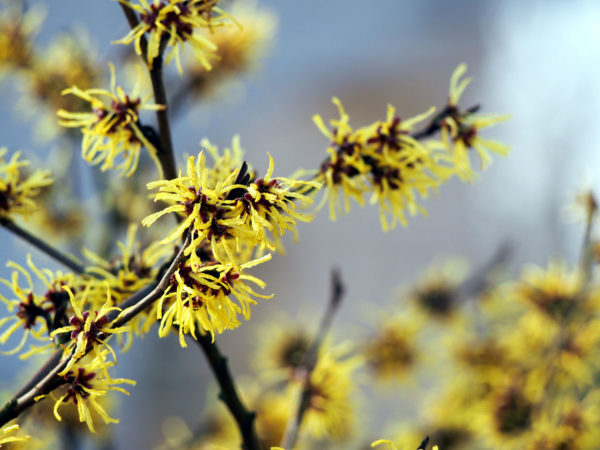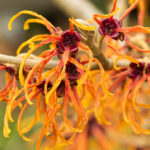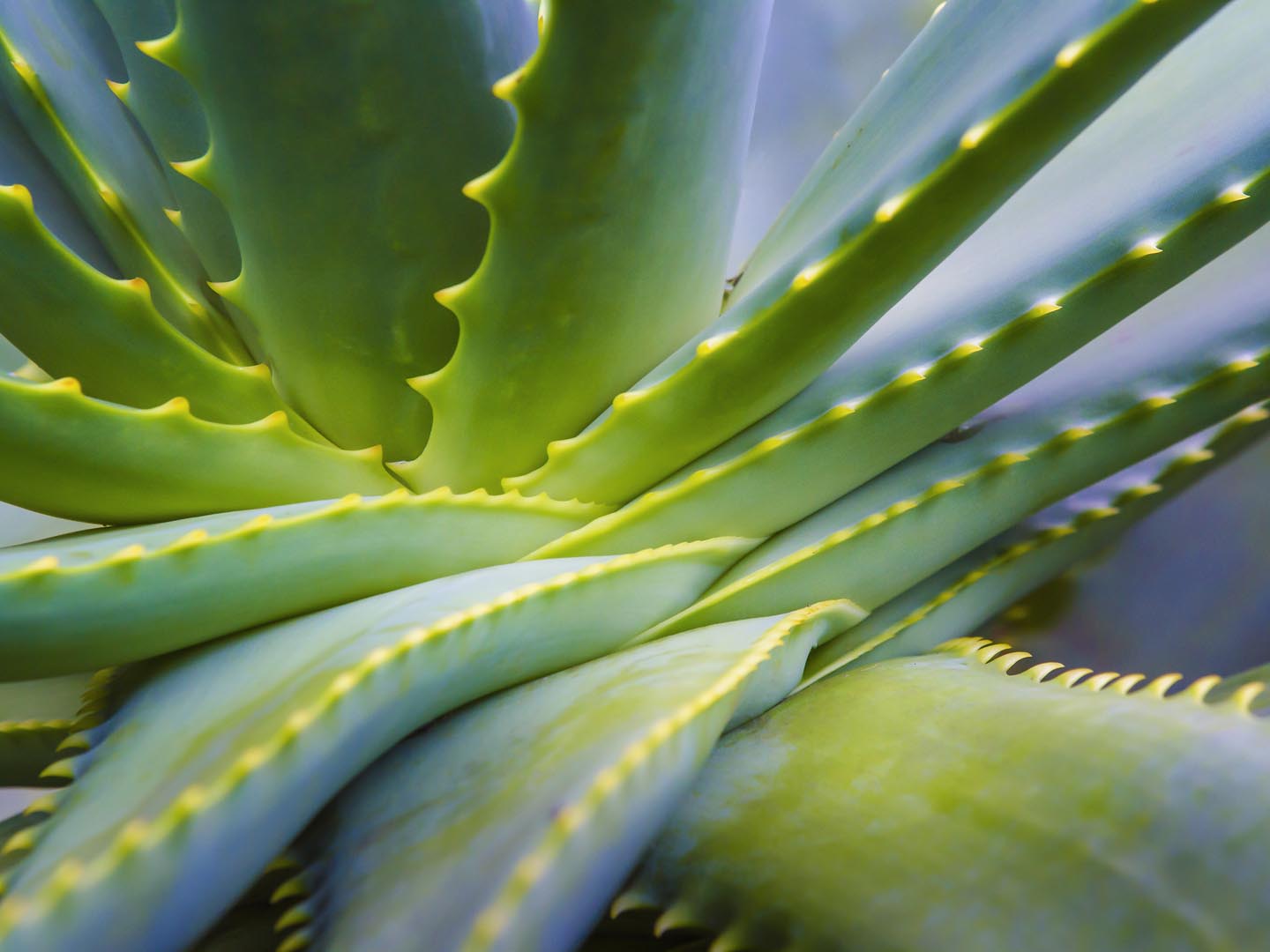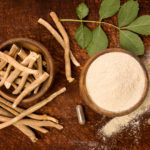Witch Hazel For Skin Conditions

Witch Hazel (Hamamelis virginiana)
Witch hazel (Hamamelis virginiana) is an astringent extract that comes from the distillation of the leaves, barks, and twigs of the witch hazel shrub. It is also known as snapping hazel, winter bloom, spotted alder, tobacco wood, and hamamelis water. Native Americans first used witch hazel to treat burns, boils, and wounds, and settlers soon adopted its use as well. In the early 1800s, witch hazel was commercially available in toiletries and medicines, and it became a virtual staple in many American homes.
Witch hazel contains tannins, which the body uses to bind and form proteins and amino acids.
Uses For Witch Hazel:
Topically, witch hazel is used to treat minor cuts and abrasions, insect bites, sun and windburns, poison ivy, acne, eczema, psoriasis, skin that has been irritated from shaving, diaper rash, varicose veins, and muscle soreness.
Witch hazel is also used as a topical treatment for hemorrhoids, and anal itching and irritation.
Some studies have shown that applying witch hazel to minor cuts or scrapes effectively reduces or stops minor bleeding.
It is also used for general skin care, such as cleansing, toning, and refreshing. Evidence suggests that the tannins trigger protein precipitation, in turn tightening the superficial cell layers of the skin and causing capillaries to constrict. The tannins also have indirect antibacterial properties.
Orally, witch hazel is used to treat colitis, diarrhea, colds, fevers, and tuberculosis. However, the safety and effectiveness of oral ingestion is not well-documented, and there is little evidence supporting the use of witch hazel for these conditions.
Women sometimes use witch hazel topically to reduce swelling and soothe vaginal tissues following childbirth.
Witch Hazel Is Available In:
Liquid distillation of the leaves, bark, and twigs. Suppositories and pads with witch hazel are available for hemorrhoids.
Witch Hazel Side Effects, Interactions, And Warnings:
Witch hazel has no known drug interactions.
Ingesting plants that contain tannins, like witch hazel, may cause gastrointestinal discomfort, as well as liver and kidney damage. Some evidence suggests tannins might cause cancer while other evidence suggests tannins might prevent it. Talk to your doctor before ingesting witch hazel.
When Buying Witch Hazel:
Witch hazel is available at drugstores.
Witch Hazel Dosage:
Use as needed and follow label directions. If symptoms worsen or persist, seek medical attention.
Child dosage:
Check with your pediatrician.
Dr. Weil Says:
You have probably seen witch hazel on drugstore shelves right next to hydrogen peroxide and rubbing alcohol but have no idea what it’s for. Witch hazel is many products in one. It is highly versatile, whether you need it to soothe a bee sting, relieve the itchiness of hemorrhoids, disinfect a cut, or just calm inflamed skin. All you need is a bottle of witch hazel and a cotton swab, and you are good to go.
SOURCES:
Consumerlab – consumerlab.com/tnp.asp?chunkiid=111818Drugs.com – drugs.com/npp/witch-hazel.html
Steven Foster Group – stevenfoster.com/education/monograph/witchhazel.html
Natural Database – http://naturaldatabase.therapeuticresearch.com/nd/Search.aspx?pt=100&id=227&fs=ND&searchid=37620784&cs=nonmp&s=ND
Reviewed by Russell Greenfield, M.D., August, 2016.













